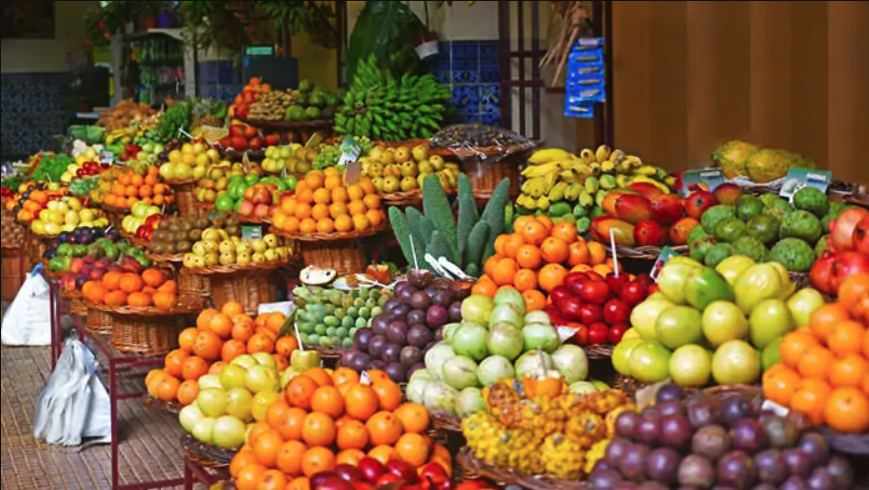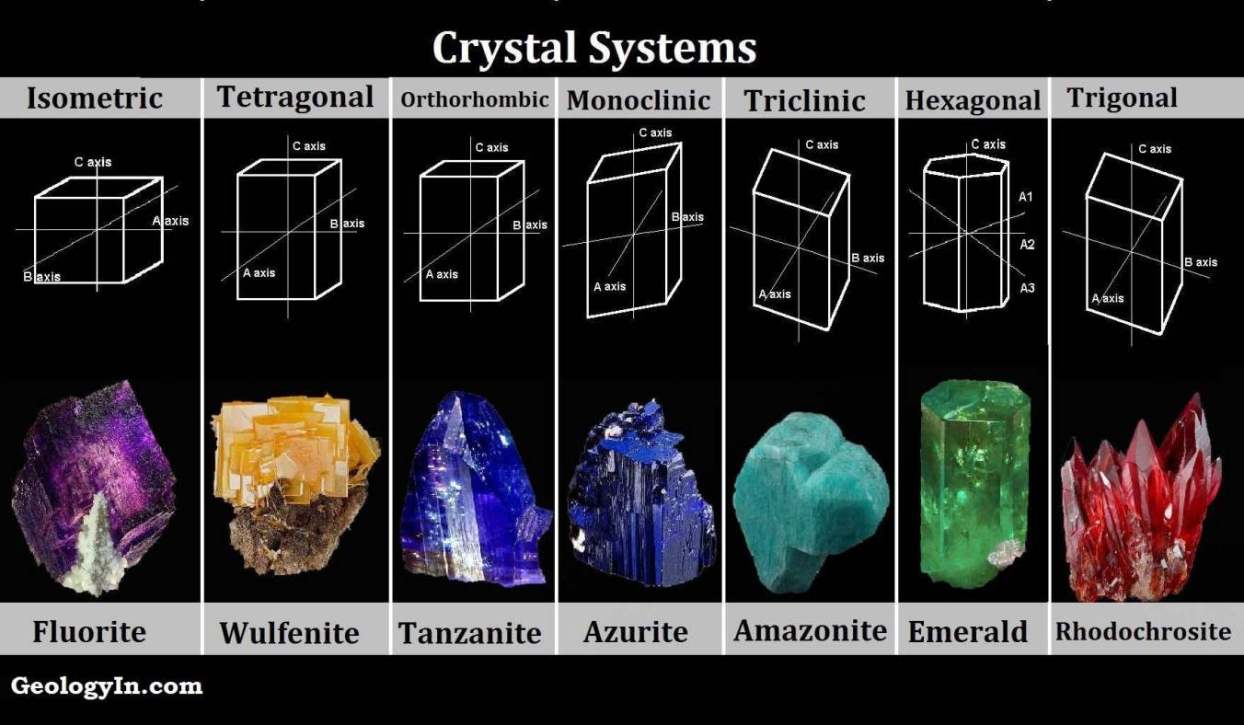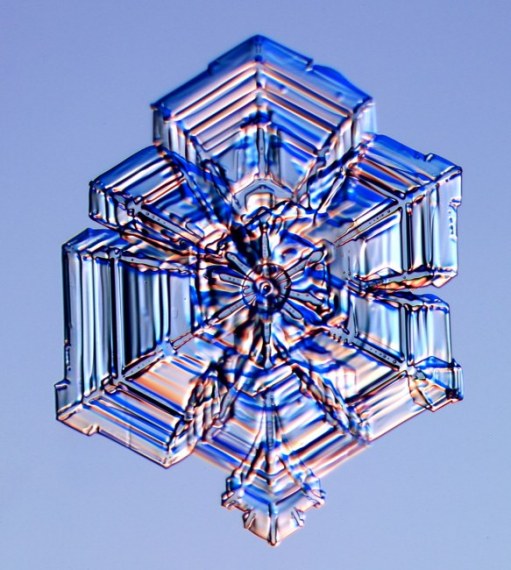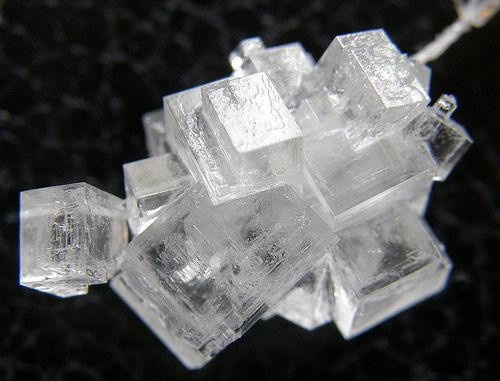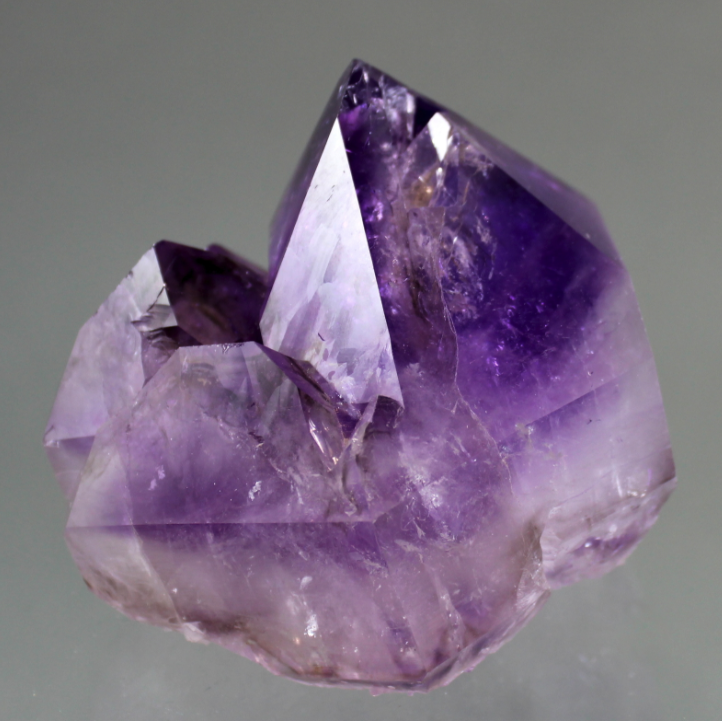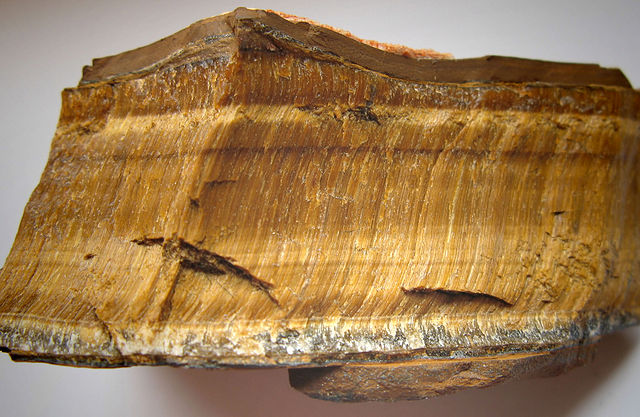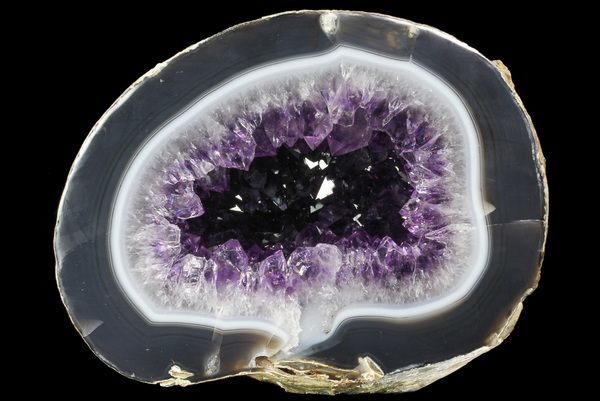Study Guide: Crystals
- Every mineral, whether it looks like a crystal or not, is crystallized inside.
- The process of crystal forming is called crystallization.
- Crystals need a quiet space and time to grow.
- An important property of crystals is that the have flat faces (or facets).
- There are six basic types of crystals, called Crystal Systems.
(Almost) All Rocks Are Crystals
Every mineral, whether it looks like a crystal or not, is crystallized inside. The outer shape of a crystal is closely related to the internal structure. Just as a pile of fruit in a grocer’s display is partly determined by the shape of that particular fruit, the pattern made by the interlocking units in a mineral are related to the outward shape of the crystal. Rocks we commonly think of as crystals are a special kind of solid material where the molecules fit together in a repeating and predictable pattern.
Think of the ordered atoms—the molecular lattice—of a crystal like the arrangement of trees in an orchard as you drive past. The lattice of an orchard is simple. The lattices of minerals range from simple to very complex, and they are part of what governs how crystals grow.
How do crystals form?
The process of crystal forming is called crystallization. Crystals often form when liquids cool and start to harden. Certain molecules in the liquid gather together in a uniform and repeating pattern that forms the crystal.
Crystals form when liquid rocks cool. If the rock cools slowly, valuable crystals such as diamonds, rubies, and emeralds may form. Another way crystals form is when water evaporates from a mixture. Salt crystals often form as salt water evaporates.
Space to Grow
In most rocks, minerals can only grow until they meet the grains that surround them, so while they are crystalline inside, they don’t look that way on the outside.
Crystals need an empty space around them before they can form into large beautiful shapes we usually think of as crystals. Geologist use this fact to understand the inner earth. By looking at how a crystal grew, they can make better guesses about the environment it grew in.
Properties of Crystals
Crystals can have very flat surfaces called facets. They can form geometric shapes such as triangles, rectangles, and squares.
These shapes are a direct result of the type of molecules and atoms that make up the crystal. All crystals formed by the same minerals and under the same conditions will have the same crystal shapes. There are seven basic crystal shapes, also called lattices. They are Cubic, Trigonal, Triclinic, Orthorhombic, Hexagonal, Tetragonal, and Monoclinic.
Crystal Systems
A simple rule for crystals was first described in 1667 by Nicolaus Steno:
Whatever shape they have, crystals of a mineral always have the same angles between the faces.
These angles are direct clues to the internal structure of a mineral, but they are clues that we couldn’t fully understand until physics and chemistry advanced into the 20th century. By studying the symmetry of minerals, we can sort them into six crystal systems, and one of thirty-two crystal classes.
Some Popular Crystals
Snowflakes
Snowflakes are ice crystals that form when water in clouds freezes. They always have six sides (or arms). Although the growth of ice crystals follows a very simple process, there infinite ways the process can ber altered. This results in a vast variety of snowflake shapes.
Salt
Quartz
Quartz is a very common crystal, and is one of the hardest minerals. The gemstone amethyst is a purple type of quartz.
Tiger’s Eye
Tiger’s Eye is usually formed in metamorphic rock. It is a type of quartz.
Geodes
Geodes are more or less spherical rocks containing a hollow cavity lined with crystals. They form in igneous and sedimentary rocks. There are two major steps in their formation.
- A hollow space (or bubble) is formed as liquid rock cools.
- Minerals precipitate out of groundwater, slowly forming crystals on the walls of the bubble.
Diamonds
Diamonds are one of the most valuable minerals on Earth. Diamond is the hardest substance on earth. Diamond is made of carbon.
Gems
There are many different precious and semi-precious gems. Here is a page with some beautiful examples




